Kawasaki Z1300
With Ian Falloon
Kawasaki has always displayed a penchant to be the biggest and fastest kid on the block. It began back in 1968 with the fearsome 500cc H1 two-stroke triple and continues today with the awesome supercharged H2R.
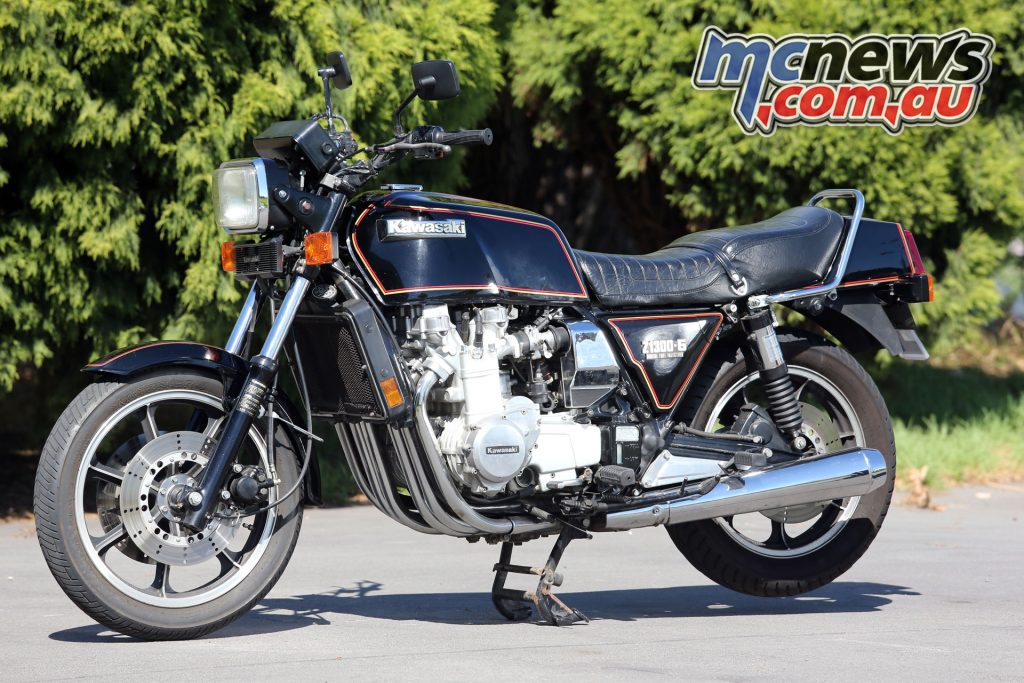
In between were the astounding Z1 in 1972, and in the colossal six-cylinder Z1300 of 1979. While there has been an array of impressive high performance Kawasakis since then, and some important milestone machines, the Z1300 remains an enigma. Nearly thirty years on it is a testament to the days when Kawasaki was obsessed with corporate one-upmanship, and prepared to break from the four-cylinder “Universal Japanese Motorcycle” mould.
Although released only four years after the Honda Gold Wing, in 1979 the idea of a 1300 cc, six-cylinder, 120 horsepower, 296-kilogram motorcycle was extreme. The Honda CBX 1000 six cylinder produced a mere 105 horsepower, only the Harley-Davidson Classic boasted a larger capacity motor, and the Gold Wing weighed a relatively puny 265 kilograms. Kawasaki saw the Z1300 as the mammoth motorcycle to defeat all others.
More powerful than many cars at the time, the Z1300 was the most complicated motorcycle available in 1979. At the heart was a liquid-cooled double overhead camshaft engine, the assembly alone weighing 130 kg, more than some 125 cc motorcycles.
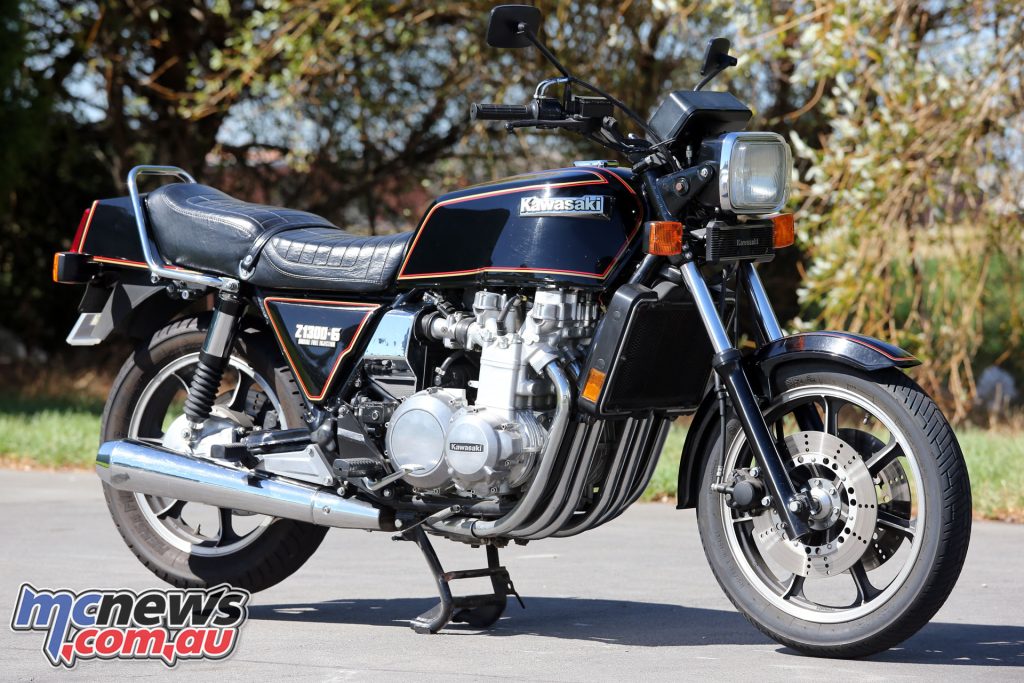
Undersquare dimensions (62 x 71 mm) kept engine width to a minimum, but this was still a considerable 635 mm. The crankshaft was a forged one-piece type, with plain bearings and a Hy-Vo chain driving a jackshaft for the clutch, camshafts, and oil pump.
On one end of the crankshaft was an alternator, and on the other an automotive-type rubber and elastic harmonic balancer (Lanchester damper) to smooth the torsional vibrations from the long crankshaft.
A Hy-Vo chain drove the two one-piece camshafts, and a PCV (positive crankcase ventilation) system of reed valve chambers behind each exhaust valve-controlled emissions. The compression ratio was 9.9:1 and the three 32 mm two-barrel Mikuni BSW32 constant-vacuum carburettors were flexibly mounted. An indirect five-speed gearbox, with both input and output on the right side drove a bevel gear to the driveshaft.
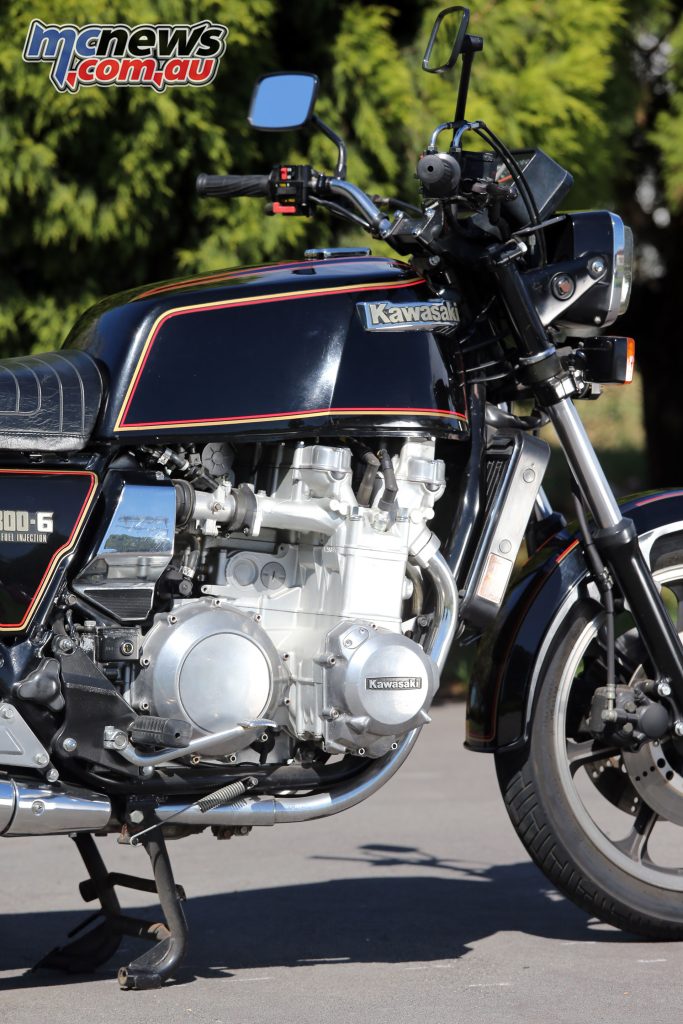
Awe-inspiring and intimidating, in every respect the Z1300 screamed large. While conventional in design, the tubular steel frame was massive, with a 45mm backbone and pressed steel reinforcement.
Twin shock absorbers bolted directly to the crown wheel housing and brake caliper carrier and the front fork was a 41 mm air-assisted leading axle type. The wheels were 18 and 17-inch with triple disc brakes, and stretched to a massive 1580 mm wheelbase, with a daunting 809 mm seat height. But despite its size and weight the Z1300 wasn’t easy to categorise. Kawasaki may have envisaged the Z1300 as a tourer but it was a far more capable motorcycle than any paper specifications indicated.
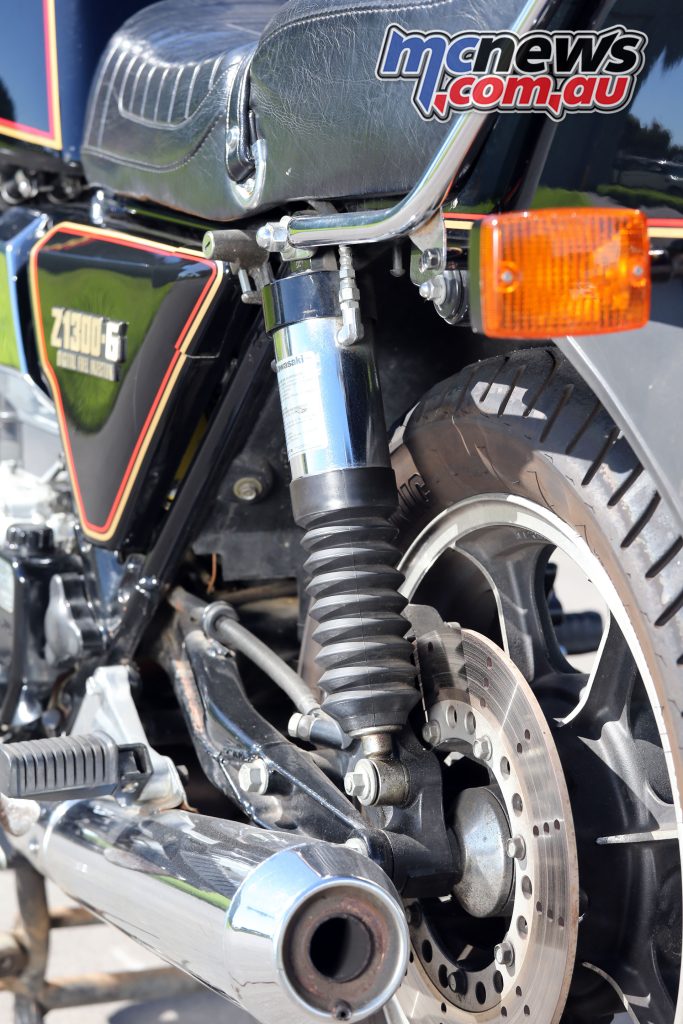
But the Z1300 was too radical to succeed. It evolved into a full dress tourer, the Voyager in 1984, running until 1989. Never built in large numbers (20,000 Z1300s and 4,500 Voyagers), in Australia the Z1300 was always sold to order and only around 400 were imported over a ten-year period.
For 1984 the Z1300 gained electronic fuel injection (as on this example), increasing the power to 130 horsepower, and as many were converted into sidecars or custom specials original Z1300s are rarely seen nowadays. Although not a landmark bike for Kawasaki like the Z1 and GPz900R, the Z1300 remains an important example of the streak of individualism emanating from Akashi.
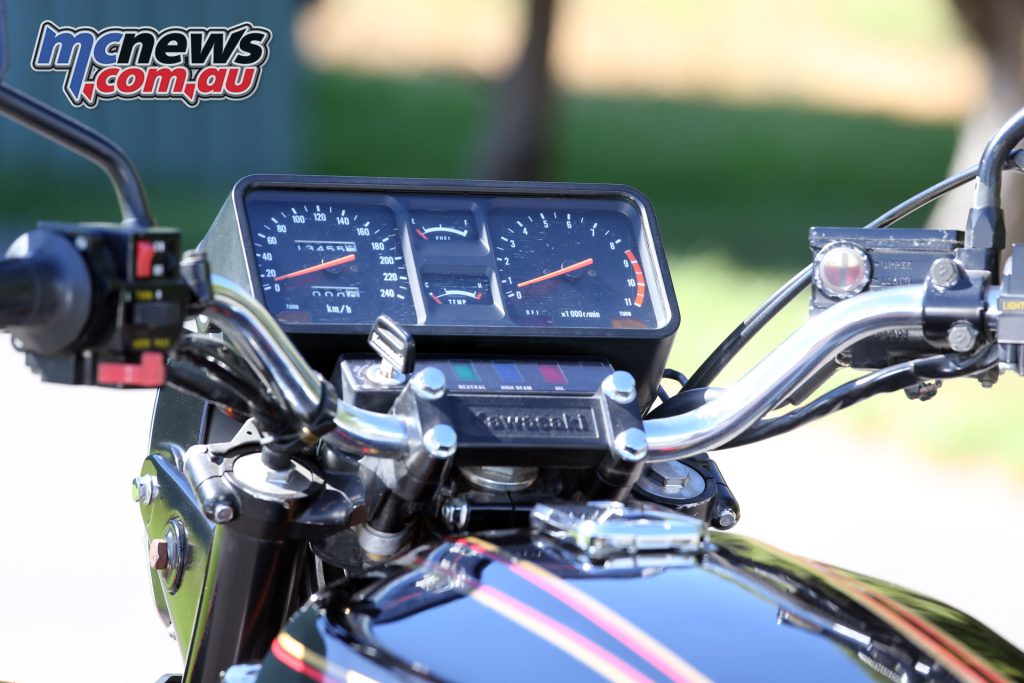
By the end of the seventies the day of the behemoth musclebike was already over. Already the Japanese were developing a new wave of lighter, more compact Superbikes with more power, and handling to match. In this context critics often dismissed the Z1300 as an irrelevant example of excess, but they missed the point.
More than a high-performance Superbike, the Z1300 was an example of a company prepared to tread a radical path from the norm. Motorcycle manufacturers are no longer as eager to invest in risky alternatives, and the classic, individual, machines of the late 1970s and early 1980s, such as the Z1300 shall probably never be seen again.
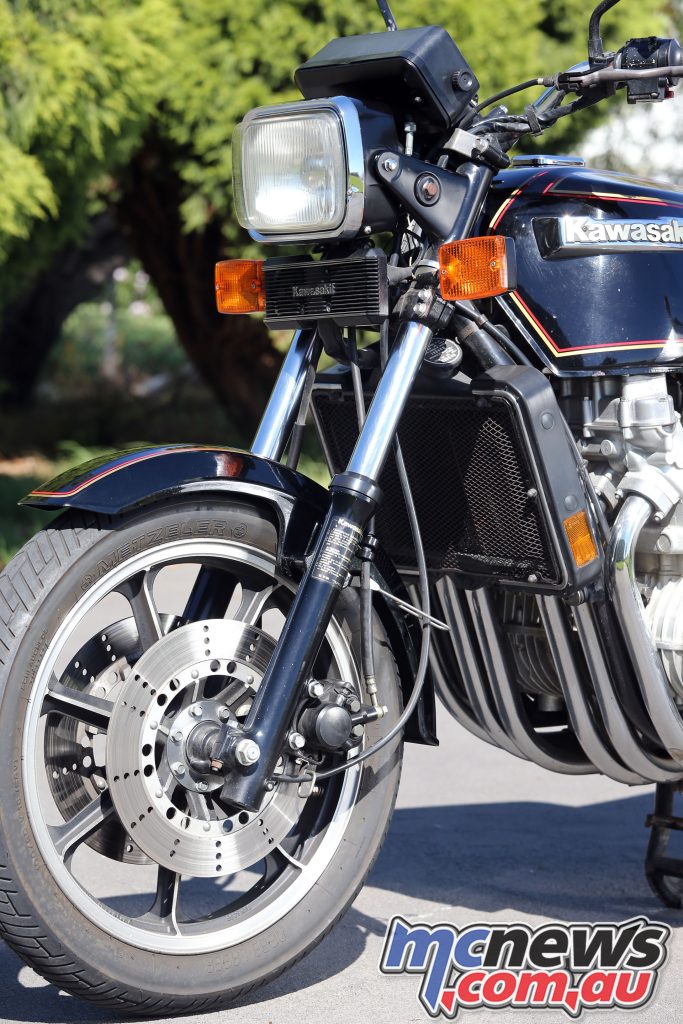
Six Facts About the Kawasaki Z1300
- Initial guidelines for the six were laid out as far back as June 1973, code-named “Model 203”. With the first drawings completed by April 1974 and the Functional Prototype Drawing by December 1974, a prototype was running by September 1975
- After considering V and square-fours, an in-line six-cylinder engine was chosen. The initial size was 1200 cc and the early prototype a supersport with small bikini fairing.
- With the release of Harley-Davidson’s 1340 cc Evolution engine Kawasaki decided to increase the capacity to 1286 cc. The debut of the Z1300 was at the Cologne Show in September 1978.
- Gary Thomas and Clive Knight fronted on Z1300s in the 1979 Unlimited Production race at Bathurst. Thomas diced for the lead, eventually finishing second. The Z1300 was fastest through the speed trap, at 241.6 km/h
- So strong was the motor that two turbocharged Z1300 engines powered Don Vesco’s 318.598 mph (513 km/h) record breaking motorcycle of 1980.
- In December 1982, Ross Atkin set a new round Australia record, riding 15,000 kilometres from Melbourne to Melbourne in six days, 22 hours, and 51 minutes on a Z1300A4.
Related Links
Six-Cylinder Motorcycles Revisited























